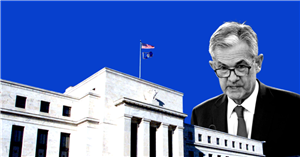Goldman Sachs Forecasts Potential Fed Rate Cuts by Mid-2024

Goldman Sachs, a leader in global investment banking and securities solutions, predicts that the U.S. Federal Reserve (Fed) may begin reducing interest rates by the third quarter (Q3) of 2024. This forecast hinges on forthcoming inflation and job market data, signaling a potential shift from the Fed’s recent cautious stance on rate hikes.
Fed’s Rate Reduction Timeline:
While the exact timeline for the Fed’s interest rate cuts remains uncertain, Goldman Sachs has revised its initial prediction from December 2024 to Q3 of the same year. The expected rate reduction could be double that of 2019’s cut, driven by a decline in inflation rates. By the end of 2024, rates may drop to 4.875%, potentially bolstering market optimism.
“Healthy growth and robust labor market data suggest that immediate rate cuts are unlikely, but improving inflation metrics may accelerate normalization efforts,” notes Jan Hatzius, a renowned economist at Goldman Sachs.
Recent Personal Consumption Expenditures (PCE) and Consumer Price Index (CPI) data indicate a softening inflationary trend, while strong job reports underscore a resilient U.S. labor market. According to the CME FedWatch Tool, there is a 98.4% probability that the Fed will maintain the current interest rate target of 5.25–5.50% at this week’s Federal Open Market Committee (FOMC) meeting.
Bitcoin and Cryptocurrency Market Implications:
The potential easing of Fed policies, as inflation rates cool down, is heightening expectations for a forthcoming announcement by Fed Chair Jerome Powell. Any delay in rate cuts could impact Bitcoin prices, particularly in light of the anticipated April halving. A stronger U.S. dollar might trigger a correction in Bitcoin’s value. Currently, Bitcoin trades at $42,160, fluctuating between a 24-hour low of $40,521 and a high of $44,034.
Investors and traders are closely monitoring the Fed’s decisions, which will significantly influence the financial markets in the coming weeks. The dynamic interplay between interest rate policies, inflation, and the labor market continues to be a critical focus for market participants worldwide.
Source: Read Full Article
